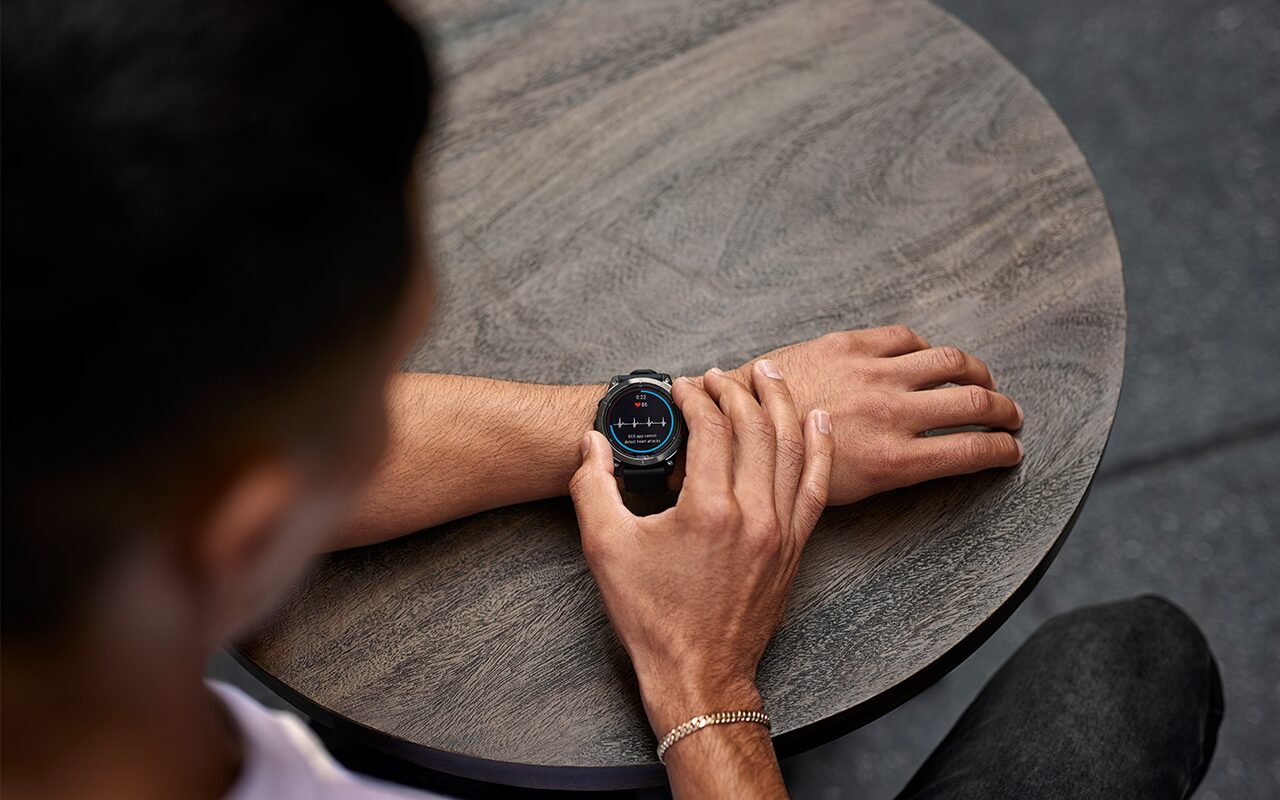Garmin ECG App Helps Discover AFib Condition

April 1, 2024
The Garmin ECG app enables users to check for signs of AFib and share each recording as a PDF with doctors. That allows Randy Houser to feel more in control of his condition.
As a longtime fan and authorized dealer of Garmin products, Randy Houser has come to expect a wide range of fitness and wellness smartwatch features. But he never imagined that his new epix™ Pro (Gen 2) watch would work hand in hand with an app that could inform him of a potentially dangerous heart condition known as atrial fibrillation1, or AFib. Thanks to the Garmin ECG app and its ability to detect AFib, Houser says he has been able to stay one step ahead of his condition.
Why was the ECG app valuable to Houser? On multiple ECG recordings, the ECG app detected signs of AFib, an irregular heart rhythm that occurs when the upper and lower chambers of your heart are not beating in sync. In Houser’s case, he began experiencing dizziness and a tight chest while running or riding his bike. He recorded his heart rhythm using the ECG app when experiencing an episode. Houser recalled his first AFib result as he trained for the California International Marathon.
“I felt good until I got super lightheaded. I checked my watch and saw my heart rate was just sky high, so I stopped and started walking,” he said. “When I got back to my truck, I sat down and tried out the ECG app. Sure enough, the result indicated the presence of AFib. I synced the result using the Garmin Connect™ app on my smartphone, and the really cool thing is you can save the ECG recording as a PDF. I bike with my family doctor a lot, so I just texted it to him, and he’s like, ‘Oh my gosh.’ He was surprised with the reading because I had done blood work and tests and nothing came up. I seem to only get AFib when I’m physically active.”
Houser says the ability to detect AFib using the ECG app on his smartwatch gives him peace of mind and a better understanding of his condition. The ECG app is available on compatible Garmin smartwatches and can yield five different results — sinus rhythm, atrial fibrillation, heart rate too high or too low to check for the presence of AFib, and inconclusive. Learn more about Garmin ECG app results here.
After his AFib specialist reviewed his ECG app results, Houser was then provided with additional clinical testing that led to his AFib diagnosis.
“You’re wearing your watch on your wrist all the time and so when (AFib) happens, I’m able to record it and share the data as needed,” Houser said. “I can also go back into Garmin Connect and look back in time — four weeks, seven days, a year — and (review my ECG App results). To me, that’s really important. It’s neat having the ability to check out my heart rhythm and record it from my wrist.”
Houser, the owner of Legends Running Shop in Angola, Indiana, estimates he currently uses at least a half dozen Garmin products, including the epix Pro™ (Gen 2), Edge® 1040 Solar, HRM-Pro™ Plus, Varia™ UT800 Smart Headlight, Varia RCT715 Radar Camera Tail Light and Forerunner® 945 LTE.
“I’d probably say that I’m a Garmin fanatic, yes,” Houser said. “Most of my workers here have Garmin watches too. I just think there’s a reason Garmin is the benchmark. With every iteration, there’s more cool stuff such as LiveTrack, Garmin Pay™ or the ECG app. It’s always amazing to discover all of the new stuff coming down the pipeline.”
Want to see what the ECG app can do for you? Check out compatible Garmin smartwatches and find the one that’s right for you.
1The ECG app is only available on select Garmin smartwatches with the latest version of the Garmin Connect™ smartphone app and watch software. The ECG app is not available in all regions; see Garmin.com/ECG for availability. The ECG app is not intended for use by people under 22 years old. With the ECG app, a compatible Garmin smartwatch is capable of generating an ECG similar to a single-lead electrocardiogram.
2The ECG data displayed by the Garmin ECG app is intended for informational use only. The user is not intended to interpret or take clinical action based on the device’s output without consultation of a qualified healthcare professional. The ECG waveform is meant to supplement rhythm classification for the purposes of discriminating AFib from normal SR, and it is not intended to replace traditional methods of diagnosis or treatment.
